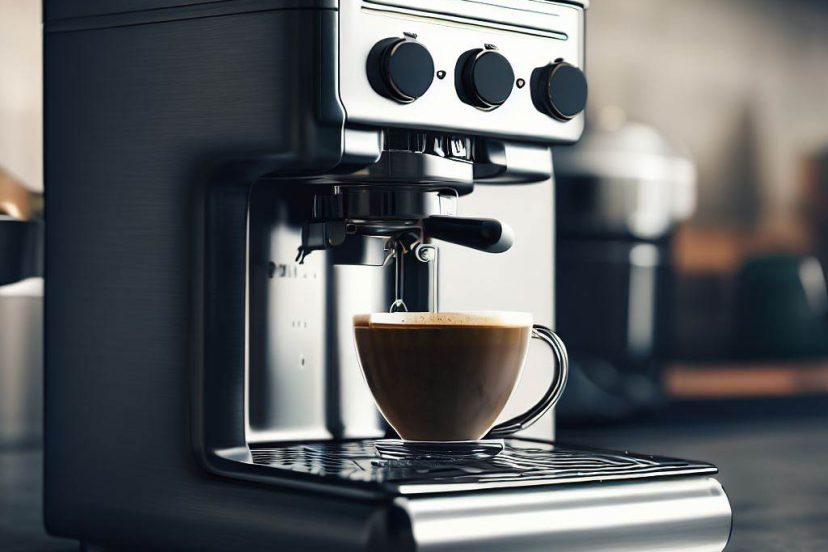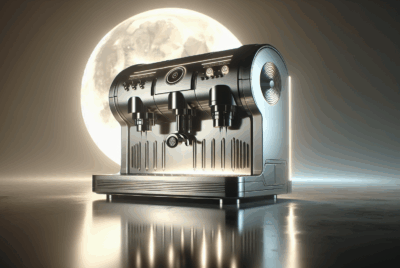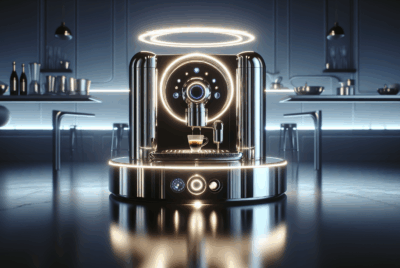How to Use an Espresso Machine Like a Barista
As an Amazon Associate, I earn from qualifying purchases, at no additional cost to you. Disclaimer
Introduction
Hey there! Are you someone who can’t start the day without a great cup of coffee? Me too! That’s why I want to share the wonderful world of espresso with you. Home espresso machines are a game-changer for coffee lovers, giving us the ability to brew barista-quality espresso right in our kitchens. But, how do you use an espresso machine? I’m here to walk you through it.
Benefits of Using an Espresso Machine
Owning an espresso machine has several benefits. It saves time and money by reducing trips to the café, and it offers the flexibility to tweak the taste to your liking.
Parts of an Espresso Machine
Getting to know your espresso machine is like getting to know a new friend. Let’s take a closer look at its features.
Water Reservoir
This is where the brewing process begins. Depending on your machine, the water reservoir might be removable or fixed. Some high-end models even connect directly to a water line. Always fill it with cold, filtered water to ensure a great-tasting espresso. Avoid distilled water because it can damage your machine over time due to lack of minerals. When I first started using an espresso machine, I underestimated the importance of water quality. It really does make a huge difference to the end taste!
Portafilter
The portafilter, or group handle as it’s sometimes called, is the part that holds the coffee grounds. It attaches to the group head and hot water runs through it to brew the coffee. Depending on your machine, your portafilter might be pressurized or non-pressurized. As a beginner, a pressurized portafilter can be more forgiving as it helps ensure pressure stability even if your grind size or tamping pressure isn’t perfect.
Filter Basket
The filter basket fits inside the portafilter and holds the coffee grounds. There are usually two sizes: one for a single shot and one for a double shot. As a beginner, starting with a double shot can be easier. In my early espresso-making days, I found the double shot filter gave me more room for error while I was still learning to perfect my tamping and brewing.
Group Head
The group head is where the portafilter attaches to the machine. Water comes out of the group head and into the portafilter to brew the espresso. Make sure to keep this part clean, as old coffee residues can affect the flavor of your espresso. One useful tip is to run water through the group head before attaching the portafilter. This preheats the group head and ensures a stable temperature during brewing.
Steam Wand
The steam wand is what you use to steam and froth milk for lattes and cappuccinos. The wand releases steam that heats and aerates the milk, creating that creamy, foamy texture we all love. If you’re new to steaming milk, start with a larger pitcher and more milk than you need. This gives you room to practice your technique without worrying about spillage. Trust me, my first few tries were quite messy until I got the hang of it.
Drip Tray
The drip tray catches any water or coffee that spills over during brewing. It’s essential to empty and clean this tray regularly to avoid build-up and unwanted odors. Plus, a clean espresso machine just looks more inviting, wouldn’t you agree?
Step-by-step Guide to Using an Espresso Machine
Filling the Water Reservoir
You’ll want to start by filling the water reservoir. While this may seem like a simple step, the quality of your water can dramatically affect your espresso’s flavor. I recommend using filtered water, as tap water often contains impurities and minerals that can build up in your machine and impact the taste of your coffee.
Grinding the Coffee Beans
Next up is grinding your coffee beans. This step is crucial, as the size of your coffee grounds can greatly influence the flavor of your espresso. As a general rule, you want a fine grind, but not so fine that it clumps together like powdered sugar. I learned the hard way that grind size matters.
Dosing and Tamping the Grounds
After your coffee is ground to the perfect size, you’ll want to measure it into your portafilter. The standard dose for a double shot of espresso is around 18-20 grams. Of course, you should adjust this according to your taste. Once you’ve dosed your coffee, you’ll want to distribute the grounds evenly in the portafilter and then tamp them down. The purpose of tamping is to ensure an even extraction when the hot water passes through. Tamping is an art in itself – apply too little pressure, and water will pass through the grounds too quickly, leading to a weak espresso. Apply too much pressure, and water will struggle to get through, resulting in a bitter taste.
Pulling the Shot
Now you’re ready to pull your shot. Make sure your espresso machine is heated up, then secure the portafilter into the group head and start the shot. Aim for a brewing time of around 20-30 seconds. If it’s taking too long, your grind might be too fine. If it’s too quick, your grind might be too coarse. It’s all about finding the sweet spot! Don’t worry if you don’t nail it on your first few tries – it takes some practice to get the timing right.
Steaming the Milk
If you’re making a latte or cappuccino, the final step is steaming your milk. Fill a pitcher about one-third full with cold milk, then turn on your steam wand. Submerge the wand just below the surface of the milk and angle it so that the steam creates a whirlpool effect, which will heat and froth the milk simultaneously. The goal is to get a creamy, micro-foam texture – think wet paint. Be careful not to overheat the milk, as this can result in a burnt taste.
Remember, practice makes perfect. Each step in the process is an opportunity to refine your technique and improve the quality of your espresso.
Tips and Tricks for the Perfect Espresso
Choosing the Right Coffee Beans
The journey to a great espresso starts long before your machine is even switched on—it starts with choosing the right coffee beans. Espresso beans should be freshly roasted, ideally within the past two weeks, and should be espresso or medium-dark roast. The roast date is usually indicated on the packaging, so make sure to check.
Importance of Water Quality
It may seem like a minor detail, but the quality of your water can significantly affect your espresso’s taste. Tap water often contains impurities that can alter the flavor of your espresso, and it can also cause mineral build-up in your machine over time. I recommend using filtered or bottled water to ensure your espresso tastes its best.
Understanding the Importance of Tamping
Tamping is a small step that can have a big impact on your espresso. Applying the right amount of pressure when tamping your coffee grounds ensures an even extraction, which is key to a well-balanced espresso. But remember, tamping requires a bit of a Goldilocks approach: not too hard, not too soft, but just right. I’ll admit, it took me a few attempts to get my tamping technique down. A good tip is to practice on a bathroom scale first to get a feel for what 30 pounds of pressure feels like!
The Art of Milk Steaming
For lattes and cappuccinos, the quality of your milk froth can make or break your drink. The key to great froth is using cold milk and a clean steam wand. As you steam, keep the tip of the wand just below the surface of the milk to introduce air and create that velvety micro-foam texture. Be careful not to overheat the milk, as it can become scorched and impact the overall taste of your drink.
Cleaning and Maintenance
Keeping your espresso machine clean is crucial. Old coffee grounds and milk residue can seriously impact the flavor of your espresso, and mineral build-up can damage your machine. I recommend doing a quick clean after each use and a more thorough clean every week or so. This includes backflushing your machine, descaling, and cleaning the steam wand and portafilter.
Troubleshooting Common Espresso Machine Problems
Weak Espresso
If your espresso tastes weak, you may need to adjust your grind size or dose.
No Crema
A lack of crema could be due to stale beans or incorrect tamping.
Espresso is too cold
Ensure the machine is properly heated before pulling the shot.
Conclusion
That’s it – doesn’t sound too bad right? With these instructions and tips, you’re well on your way to brewing delicious espresso at home. Practice and patience are key, but the reward of a perfect shot is so worth it!
Frequently Asked Questions (FAQs)
1. How often should I clean my espresso machine?
You should clean your espresso machine after each use. A thorough cleaning is necessary every week.
2. Can I use pre-ground coffee for my espresso machine?
It’s best to use freshly ground coffee beans, as pre-ground coffee can lose its flavor and freshness.
3. Why is my espresso bitter?
Your espresso may be bitter due to over-extraction. Try adjusting your grind size to be a bit coarser.
4. How long should it take to pull a shot of espresso?
Ideally, it should take between 20-30 seconds to pull a shot of espresso.
5. Why is my frothed milk too bubbly?
Your milk might be too bubbly if you’ve placed the steam wand too close to the surface of the milk. Try placing it a bit deeper.




